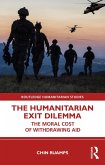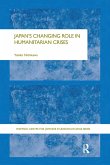This title was first published in 27/11/2001: Humanitarian nongovernmental organizations (NGOs) grew significantly in the last decades of the 20th century. The international NGO community today is a rich world of professional bodies, local organizations, mammoth multinationals, charities, advocacy groups, business-like organizations, ad hoc agencies and voluntary associations. Humanitarian NGOs are powerful actors in conflict regions and influential campaigners at the international level. What are the reasons behind their growth? In answering that question, this book focuses on how and when NGOs became influential in humanitarian crises. Four case studies in Rwanda and Afghanistan are examined. The earliest is the crisis in Rwanda in the 1960s, when only a few NGOs operated in Rwanda with limited budgets and experience. The second case study is the Soviet invasion of Afghanistan in 1979-89, by which time NGOs had developed considerably: by then they were operating on a global scale, receiving more funds, having closer ties with the media, executing bigger projects and had also become more professional. The second Afghan case study focuses on the mujahidin and Taliban rule, while the second Rwandan study centres on the 1994 genocide. These two studies reveal that enormous changes have taken place in the humanitarian NGO community since the 1980s. In this way, this book characterizes the changes that have taken place and then offers explanations for the nature and speed of the growth and change.
Dieser Download kann aus rechtlichen Gründen nur mit Rechnungsadresse in A, B, BG, CY, CZ, D, DK, EW, E, FIN, F, GR, HR, H, IRL, I, LT, L, LR, M, NL, PL, P, R, S, SLO, SK ausgeliefert werden.









